Know About Springs
It’s so easy to focus only on getting clients, teaching clients, and if you’re lucky swiftering your studio! But, while Pilates equipment seems to last a long time it’s incredibly important that we do more than just keep it germ-free. In fact, maintaining your Pilates equipment is more than just taking care of it so you have it forever. It also is integral to keeping your clients safe and that safety may just be priceless. But, here’s the deal, I like you, know as much about springs as I’ve been taught by people who maintain the equipment. So, instead of me telling you all the in’s and out’s of your studio’s springs I’ve brought in the expert herself, Kaleen Canevari of The Fit Reformer.
Can you imagine a Pilates apparatus using static weights instead of springs? When I try and picture it, I see an equipment beast: heavy, thick, ugly, and even more torture-device-like than what they look like today! Using the springs on a Reformer, it is possible to produce well over 100 pounds of resistance, and yet there are no weighty blocks, discs, or bars slamming up and down, taking up floor space, or collecting dust as you see on traditional machine weights in a gym. Joseph Pilates was a genius to use springs rather than weights, and I applaud him for finding such an elegant solution.
However, for all the convenience that springs bring in space and weight constraints, they aren’t as straightforward as traditional weights. It isn’t possible for our clients to brag about a 200-pound squat because how much tension the spring is providing isn’t constant. Nor, is it labeled and apparent to us as instructors or clients.
Because springs are sometimes seen as this mysterious part of the Pilates world, I want to address the three most common questions I get from Pilates studios around the world.
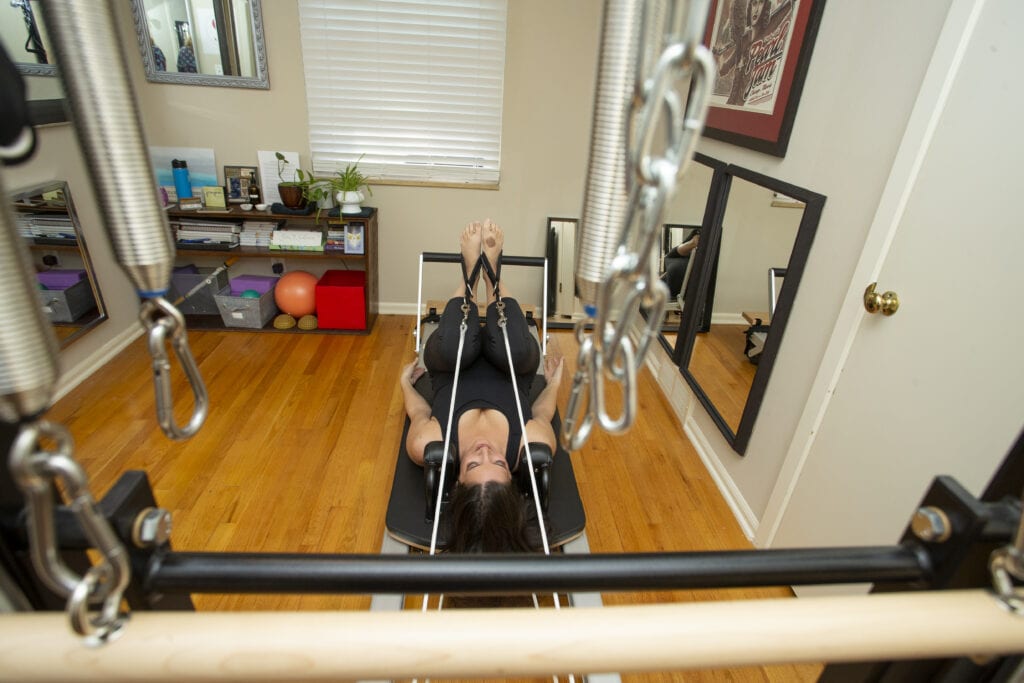
Question 1: How much weight is the red spring?

Many new clients often ask me, “How much weight am I lifting?” After so many questions like this one, I’ve chiseled my response down to a concise, two-sentence answer: “How much resistance the spring provides changes on how far it is extended and how thick the coils are. In Pilates, we aren’t concerned so much about your ability to move a certain weight as we are about the ability to move well.”
The resistance, or force, a spring provides is dependent on two things: the amount of stretch (x) it is experiencing at the moment, and the spring factor (k). This relationship is explained by the equation F=kx, known as Hooke’s Law. The spring factor (k) takes into consideration the design of the spring, including the material, diameter of the coils, and thickness of the material. Using basic math you can calculate the force a spring provides by multiplying the spring factor and amount of extension. Or, using some algebra, you can calculate the spring constant of your own spring by measuring the force of the spring and dividing that number by the length of the extension.
Let’s use a made-up Reformer spring as an example. Say we are doing footwork with one spring attached, and that spring has a k value of 1.5 lbs/in. When the carriage is pressed out 2 inches, the resistance is 3 pounds. Then, when pressed out to 6 inches the resistance increases to 9 pounds. And at 12 inches of extension, the resistance is 18 lbs. You get the idea. The more you stretch the spring the heavier the resistance.

How often do we do footwork with one spring on, though? If you want to calculate the total force of three springs, you simply add together the resistance of each of the three springs. So, if we had three of our imaginary springs all with the same spring constant from the example above, the total resistance at 2 inches of carriage extension is 3+3+3=9 pounds, and at 12 inches of extension is 18+18+18=54 pounds.

Using this principle we can also calculate the total resistance of different springs. Let’s assume we have three unique springs, one with a spring constant of 0.5 lbs/in, one with 2.5 lbs/in and, another with 5.5 lbs/in. At 2 inches of carriage extension, we can calculate the resistance of each of those individual springs by multiplying 2 inches by the spring constant, and then adding those three values together.

This kind of relationship between the spring constant and the extension is described as linear because if you were to graph this, you would get a straight line.

Question #2: Do my springs wear out over the years?
Many of my maintenance clients have told me that they’ve replaced a spring because it had worn out, meaning it felt lighter than it should. Theoretically, this is very, very unlikely, because as long as you do not stretch the spring past its extension limit, it should last millions of cycles. By even then, the mathematical result isn’t an exact number, but rather a probability.
For example, if the extension limit for the spring is 30 inches (this is my imaginary spring, remember), and you want to know how many times you can pulse the spring in and out to 20 inches before it breaks, the equation doesn’t give you an exact number. Instead, it might say that at one million cycles the probability of the spring breaking is less than 10%.
Despite the theoretical low probability, I believe it is possible for springs to wear out, though I’ve never tested it. (Someday!) Why do I think this? Because I don’t know of any Pilates studios that operate like a laboratory. When teaching clients to use a jump board, inevitably the carriage will slam home at least once. Or, someone’s hands will slip off the roll-down bar and the springs will snap closed uncontrolled. Or, we let in the cool sea breeze and the springs start developing rust. Or, we touch the springs with sweaty, lotioned hands. You get the idea. All of these things cause micro-damage to the spring and can add up to significantly shorten the life of the spring.
So how do you tell when a spring’s life is over?
Question #3: Do I really need to replace my springs every two years?
Ordering new springs may be a financial burden on your business, but is absolutely necessary for safety. Spending upward of $100 per Reformer every two years seems a little ridiculous, and I’m going to confirm your suspicions with a caveat. If (and only if!) you are closely monitoring your springs for safety hazards, you can go past the 2-year mark and only replace individual springs when you notice a warning sign or have determined the spring no longer provides enough resistance.
Fun fact: about 30% of my maintenance clients report having a spring break during a session! Having a spring break during class is a real risk, so I don’t recommend writing off the manufacturer’s warnings. (Note: If you don’t want to check your springs, then yes, please replace them at least every two years!)
Here’s what I recommend: Check each of your springs every month. Visually inspect them for any kinks, gaps, or obvious waves. Sometimes if I’m unsure, I will lightly run my hand down the length of the coil to feel for any deviations.
Then, extend the spring a little bit. The coils of the spring should separate evenly as you stretch the spring. If you notice anyone spot in the coil opening more than the others, that’s a sign there’s some damage to the spring and it’s time to replace it.
I’ve included some photos of common examples of damage I’ve seen. Keep an eye out for these and replace them immediately if you find one that looks like this!
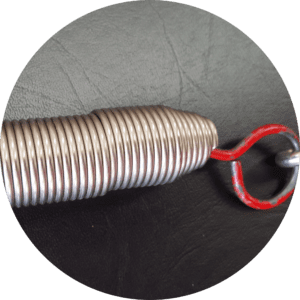
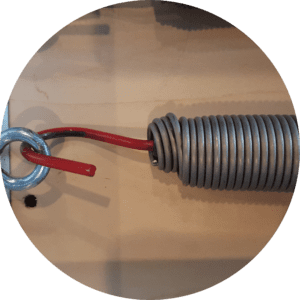
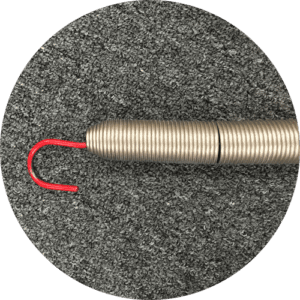
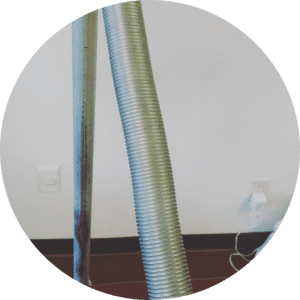
Perhaps springs aren’t quite as straightforward as stereotypical gym weights. But as a mechanism of resistance, they are a fantastic tool for many reasons and integral to teaching Pilates with equipment. I hope that I’ve been able to explain the basic science behind the springs as it pertains to use in a Pilates setting and that as a result, you can approach your Pilates practice with a little more confidence, understanding, and appreciation for Joe’s genius.
Happy Reforming!
Kaleen Canevari is a mechanical engineer and PMA certified Pilates instructor. She began her Pilates journey while working as an engineer at Balanced Body in 2013, and since then has started her own company called The Fit Reformer, which specializes in Pilates equipment care. She currently teaches Pilates part-time at a local studio in Sacramento and spends the rest of her time traveling the country working on Pilates equipment and Pilates-related projects.
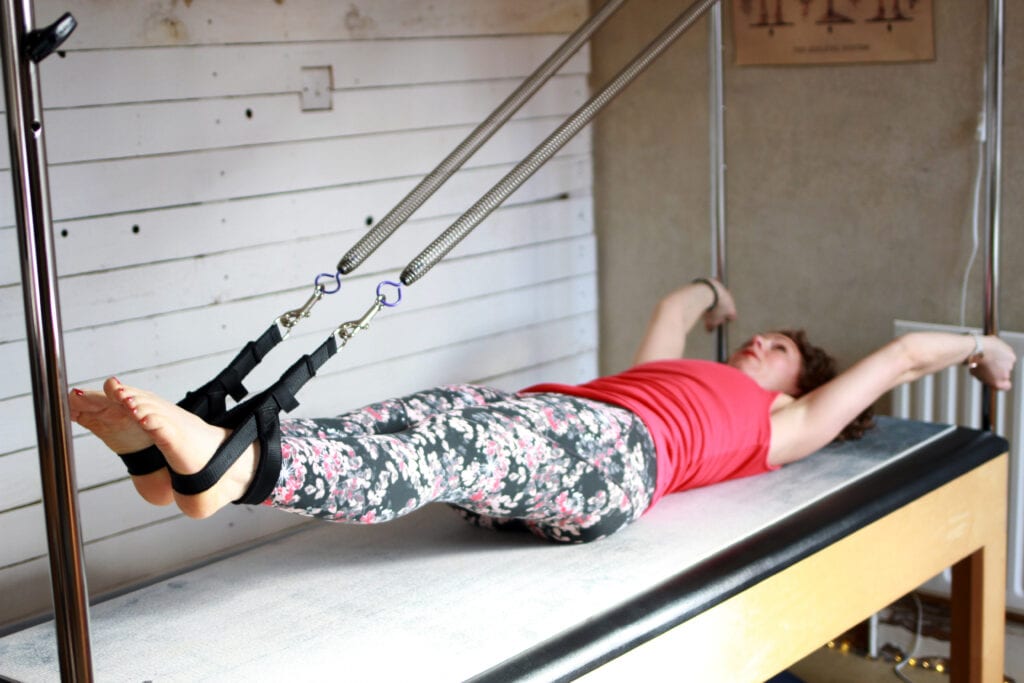




0 Comments